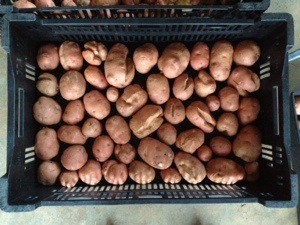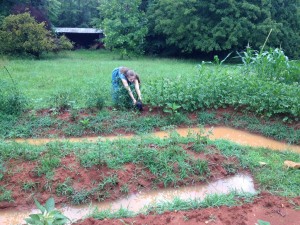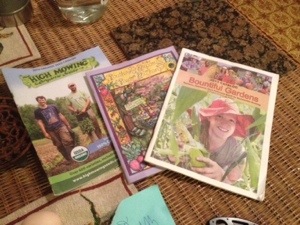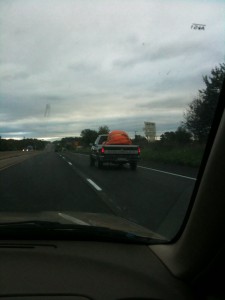In my other posts on winter homestead chores, I talked about taking the time to enjoy the season and recuperate from a busy year of homesteading and adding to the farm’s energy security by splitting wood for the woodstove. In this post, I’d like to talk about a more forward looking aspect of winter on the homestead. Planning next year’s garden.
This is a great time to start pouring over seed catalogs, looking for both the tried and true garden favorites and some new varieties, species, and heirlooms to experiment with. Many companies offer free paper catalogs, as well as online versions to help you sort through the massive number of vegetable and fruit seeds for the garden. Some of the ones on my desk are High Mowing Organic Seeds, Southern Exposure Seed Exchange, and Bountiful Gardens. These all specialize in heirloom vegetable seed, and always have something new and interesting to really get you salivating for that first planting and harvest.
In addition to vegetable seeds, it’s also a good time to look at different fruiting trees, bushes, and shrubs. Some are best grown from 1-3 year old plants, and others do well as seed. Some of these plants, like hazelnut and elderberry, require a period of cold stratification if started from seed, so these are best ordered in late fall or early winter. Others, like Paulownia, readily germinate in spring conditions without a stratification period. Some plants have very specific and difficult stratification requirements and are best grown from cuttings or plants, like Yaupon Holly, which needs up to a year of warm conditions, followed 3 months of cold before it will germinate.
Once you have your have seeds, you want to check your weather conditions and average last frost date to determine when you can start transplanting your veggies into the garden. Working back from these numbers, and taking into account the frost hardiness of the veggies in question, you can figure out the best time to start your seeds indoors so that you’ll have the healthiest plants possible.
Certain species are very frost and cold tolerant, such as many brassicas like cabbage and broccoli, and can be started and transplanted out very early in the year. Again, this depends on your climate.
Winter is also a good time to figure out where certain crops will be grown in the garden. For instance, tomatoes, potatoes, and other veggies in the nightshade family should not be grown in the same spot year after year. By practicing crop rotation, certain diseases and pest cycles are broken, and the result is healthier plants and better yields. Any good garden guide or encyclopedia–a great one on our shelf is Rodale’s Encyclopedia of Organic Gardening–will have all the information on rotating crops, and how long between plantings certain plants require before being planted in the same spot.

We planted our potatoes late, but they still did well. We definitely won’t plant them in the same spot, though.
Finally, winter is great time to go over your garden notes–everyone should have a garden notebook–and remember what did well and what didn’t. What vegetables stored longest? Which varieties tasted best? What do you need to plant more of? Less of? Were certain things planted too late? All of these tidbits and recollections allow the organic gardener to finetune their garden into exactly what they want it to be, because gardening is a never ending lesson, and winter is a great time to study.


